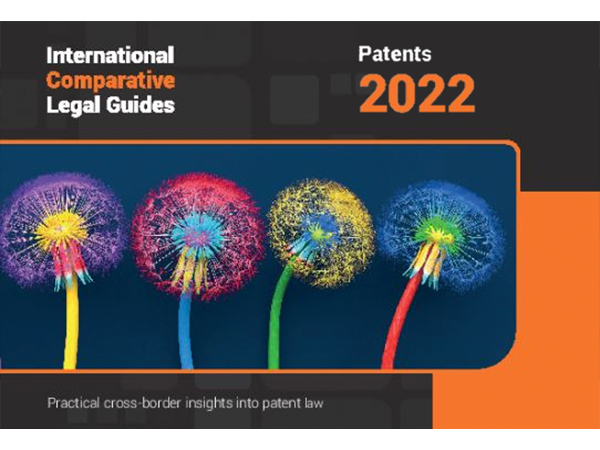
Intellectual Property
Viewpoints
Filter by:
European patents to take effect in Morocco
March 3, 2015 | Blog | By David Wraige, Isobel Finnie
From 1 March 2015, a new agreement will come into force that allows European patents to be validated in Morocco. This is the first time that a non-member country of the European Patent Organisation will have recognised European patents as national patents.
Read more
Bayer Given a Headache by Trial Court Decision in FLANAX US Trademark Dispute
February 25, 2015 | Blog | By Susan Neuberger Weller
On February 6, 2015, a US District Court issued a ruling which underscores the territorial nature of trademark rights and the need to seek formal protection for your marks where possible in all countries of interest.
Read more
Prepare for the Japanese Patent Opposition System Coming Soon
February 23, 2015 | Blog | By Christina Sperry
The Japanese Patent Act was revised on May 14, 2014 to provide for post-grant oppositions within one year of the rule change, i.e., by May 14, 2015 (the exact effective date has not yet been set). Under the new opposition system, any party, including non-interested parties and straw men, will be able to file an opposition within 6 months of patent issuance and thus potentially cause invalidation soon after patent grant.
Read more
IEEE Clarifies RAND Commitment for Standard-Essential Patents
February 13, 2015 | Advisory | By Michael Renaud, Robert Moore
On February 8, 2015, the Board of Governors of the Institute of Electrical and Electronics Engineers (“IEEE”) approved changes to the IEEE Patent Policy that provide additional specificity as to the nature of the obligation attaching to member-owned patents that are essential to an IEEE standard.
Read more
The En Banc Federal Circuit Hears Argument in Suprema, Inc. v. ITC
February 12, 2015 | Blog | By Nick Armington
On Thursday, February 5, 2015, the en banc Federal Circuit heard oral argument in the matter of Suprema, Inc. v. ITC, reviewing its controversial panel decision holding that in ITC investigations induced infringement cannot be found where no direct infringement occurs until after importation.
Read more
RCEs and the New USPTO Patent Term Adjustment Rules
January 14, 2015 | Blog | By Christina Sperry
On January 9, 2015, the Federal Register published final rules implementing changes to patent term adjustment (PTA) in view of Novartis v. Lee, which the Federal Circuit decided last January. The new rules affect patents where a request for continued examination (RCE) was filed during prosecution.
Read more
Carnegie Mellon University v. Marvell: $1.5 Billion at Stake at the Federal Circuit
January 13, 2015 | Advisory | By Michael Renaud, Peter Snell
Currently on appeal to the United States Court of Appeals for the Federal Circuit is Carnegie Mellon University’s (“CMU”) $1.535 billion judgment for patent infringement against Marvell Technology Group Ltd. and Marvell Semiconductor, Inc. (collectively “Marvell”), which is one of the largest damages awards for patent infringement in history.
Read more
Patentability of Software Post-Alice: How Do Courts Determine Whether an Idea is Abstract ?
January 12, 2015 | Advisory | By Michael Renaud, Courtney Quish, Sean Casey, Matthew Karambelas
Since the Supreme Court’s decision in Alice Corp. v. CLS Bank Int’l on patentable subject matter, courts have tried to follow the prescribed framework.
Read more
C.D. Cal. Swims Against the Tide of Software Patent Ineligibility in Caltech v. Hughes
December 31, 2014 | Blog | By Michael Van Loy, Inna Dahlin
Patent applicants from the software and business method fields took notice after the United States Supreme Court issued its opinion in Alice Corporation Pty. Ltd. V. CLS Bank International, et al. (“Alice,” 134 S. Ct. 2347 (2014)) on June 19, 2014, and the U.S. Patent and Trademark Office (“USPTO”) followed with preliminary guidelines (“Guidelines”) issued June 25, 2014 for examining subject matter eligibility under 35 U.S.C. § 101 of claims relating to a judicially created exception to patent eligibility.
Read more
Highlights of the USPTO Patent Public Advisory Committee 2014 Annual Report
December 31, 2014 | Blog | By Christina Sperry
The Patent Public Advisory Committee (PPAC) recently released its 2014 Annual Report evaluating a variety of programs at the U.S. Patent and Trademark Office (USPTO) and recommending that the USPTO take certain actions with respect to those programs.
Read more
CAFC Delivers Another Decision on Patentability of Myriad Patents
December 19, 2014 | Alert | By John Bauer
In Univ. of Utah Res. Foundation et al. v. Ambry Genetics Corp., No. 2014-1361 (Fed. Cir. Dec. 17, 2014), the Federal Circuit once again has weighed in on the patent eligibility of Myriad Genetics, Inc.’s patents related to BRCA1 and BRCA2 genes.
Read more
USPTO Issues Interim Guidance on Patent Eligibility Under §101: Framework for Considering Whether Patents Are Eligible for US Patent Protection Significantly Improved
December 17, 2014 | Alert | By Michael Van Loy, Inna Dahlin
The United States Patent and Trademark Office (USPTO) has issued revised guidance to its examiners relating to determination of patent eligibility under 35 U.S.C. §101.
Read more
Turning Your Research Into Something More: Patents Versus Papers
December 17, 2014 | Blog | By Christina Sperry, Inna Dahlin
Scientific or technical journal writers like scientists, doctors, engineers, and academics are usually introduced early to the importance and strategy of writing and publishing papers, but patent applications having those same professionals as inventors are usually not so well explained and can be more of a mystery.
Read more
For the First Time PTAB Upholds Validity of Pharma Patents
December 15, 2014 | Blog | By Dave Cotta
On December 9, 2014, the Patent Trial and Appeal Board (“PTAB”) upheld the validity of three Supernus Pharmaceutical’s patents relating to once-daily formulations of doxycycline.
Read more
CAFC Finds Patent Claiming Software-Related Invention is Patentable
December 10, 2014 | Blog | By Matthew Karambelas, Sean Casey
For the first time since the Supreme Court’s Alice Corp. v. CLS Bank Int'l decision this past summer, the United States Court of Appeals for the Federal Circuit has found that a patent claiming a software-related invention was patentable subject matter under 35 U.S.C. § 101 (with Judge Chen writing the majority opinion).
Read more
Fed. Circuit: No “Bright Line Rules” For Determining RAND Royalties; Rejects District Court Method of Computing RAND Royalty Rates
December 9, 2014 | Blog | By Robert Moore
Courts in the last two years have grappled with what methodology to apply to determine a reasonable royalty rate for infringed patents subject to “Reasonable and Non-Discriminatory,” or “RAND,” encumbrances.
Read more
CAFC to Rehear Suprema: Disposition Could Have Significant Repercussions for ITC Jurisdiction
November 26, 2014 | Blog | By Nick Armington
On February 5, 2015 the en banc Federal Circuit will hear oral argument in the matter of Suprema, Inc. v. ITC., Case No. 2012-1170 (Fed. Cir.).
Read more
A Brief Synopsis of the Issues Confronting the Federal Circuit in the En Banc Rehearing of Suprema, Inc. v. ITC
November 25, 2014 | Advisory | By Nicholas Armington
On February 5, 2015 the en banc Federal Circuit will hear oral argument in the matter of Suprema, Inc. v. ITC.
Read more
ALJ Lord Amends Ground Rules to Permit Reply Briefs
November 24, 2014 | Blog
On November 17, 2014, Administrative Law Judge Dee Lord amended her Ground Rules to permit parties filing motions to file a reply brief without first seeking leave from the ALJ.
Read more
Indefiniteness: Are You Reasonably Certain?
November 21, 2014 | Blog | By Pedro Suarez, Tom Jackman
The indefiniteness standard has, until recently, been very high—only an “insolubly ambiguous claim” was considered indefinite (see, e.g., Honeywell Intern., Inc. v. International Trade, 341 F. 3d 1332, 1338–9 (Fed. Cir. 2003))—but recent events have made it easier to invalidate a claim as being indefinite.
Read more
Explore Other Viewpoints:
- Antitrust
- Appellate
- Arbitration, Mediation & Alternate Dispute Resolution
- Artificial Intelligence
- Awards
- Bankruptcy & Restructuring
- California Land Use
- Class Action
- Complex Commercial Litigation
- Construction
- Consumer Product Safety
- Cross-Border Asset Recovery
- Debt Financing
- Direct Investing (M&A)
- Diversity
- EB-5 Financing
- Education & Nonprofits
- Employment
- Energy & Sustainability
- Environmental Enforcement Defense
- Environmental Law
- FDA Regulatory
- Federal Circuit Appeals
- Financial Institution Litigation
- Government Law
- Growth Equity
- Health Care
- Health Care Compliance, Fraud and Abuse, & Regulatory Counseling
- Health Care Enforcement & Investigations
- Health Care Transactions
- Health Information Privacy & Security
- IP Due Diligence
- IPRs & Other Post Grant Proceedings
- Immigration
- Insolvency & Creditor Rights Litigation
- Institutional Investor Class Action Recovery
- Insurance & Financial Services
- Insurance Consulting & Risk Management
- Insurance and Reinsurance Problem-Solving & Dispute Resolution
- Intellectual Property
- Investment Funds
- Israel
- Licensing & Technology Transactions
- Life Sciences
- Litigation & Investigations
- M&A Litigation
- ML Strategies
- Medicare, Medicaid and Commercial Coverage & Reimbursement
- Mergers & Acquisitions
- Patent Litigation
- Patent Prosecution & Strategic Counseling
- Pharmacy Benefits and PBM Contracting
- Portfolio Companies
- Privacy & Cybersecurity
- Private Client
- Private Equity
- Pro Bono
- Products Liability & Complex Tort
- Projects & Infrastructure
- Public Finance
- Real Estate Litigation
- Real Estate Transactions
- Real Estate, Construction & Infrastructure
- Retail & Consumer Products
- Securities & Capital Markets
- Securities Litigation
- Special Purpose Acquisition Company (SPACs)
- Sports & Entertainment
- Strategic IP Monetization & Licensing
- Tax
- Technology
- Technology, Communications & Media
- Technology, Communications & Media Litigation
- Trade Secrets
- Trademark & Copyright
- Trademark Litigation
- Venture Capital & Emerging Companies
- White Collar Defense & Government Investigations
- Women's Health and Technology



